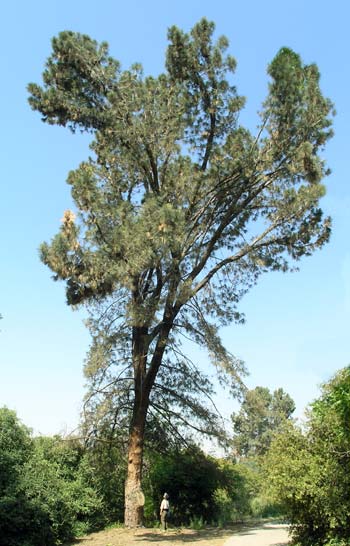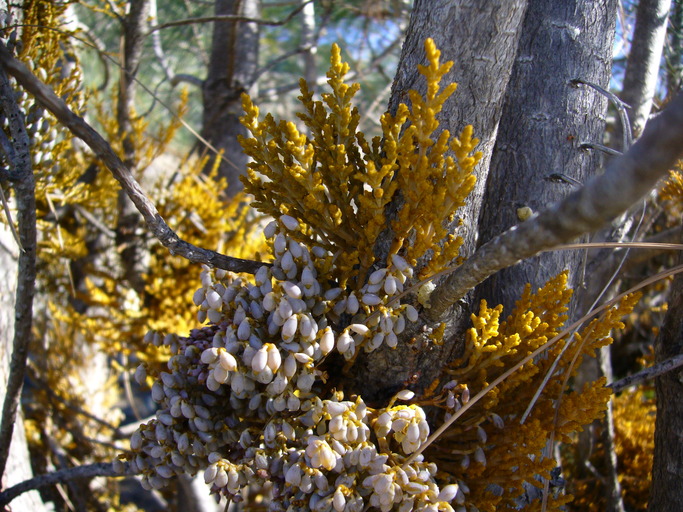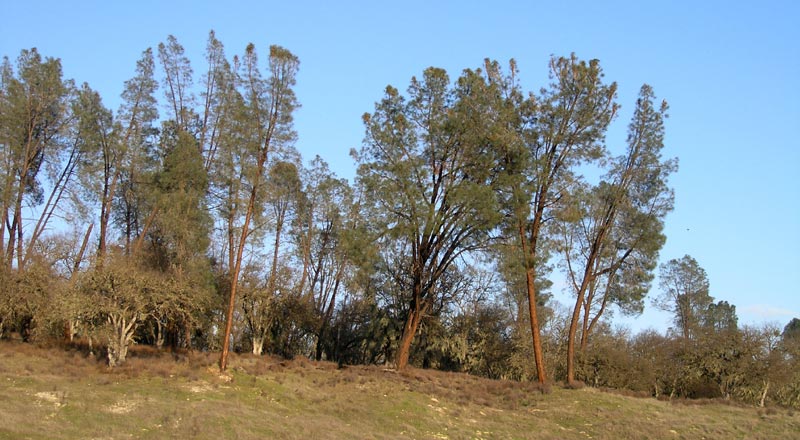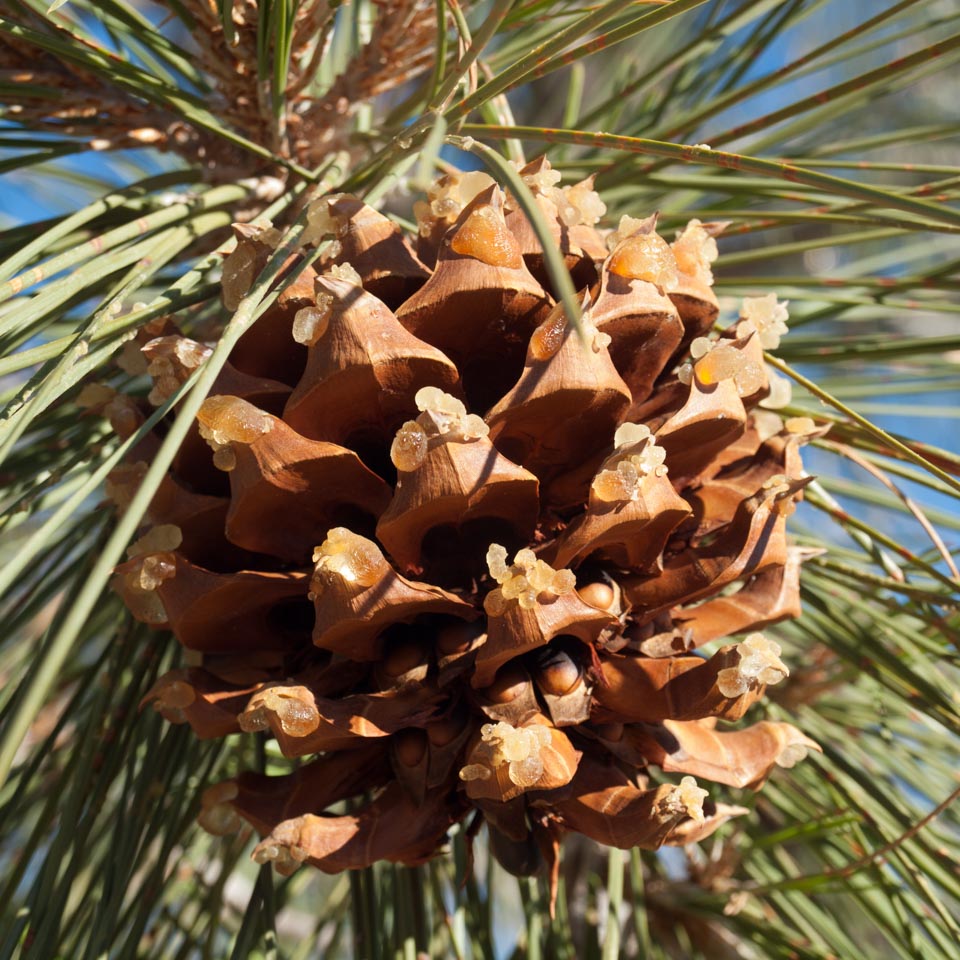Common names: Grey pine (most common), ghost pine, foothill pine, Sabine pine, bull pine or grey leaf pine.

Adapted to the long, hot, dry summers of our Mediterranean climate, the grey pine is endemic to California and prolificates within the ring of foothills that surround California’s Central Valley. It fairs well in rocky well-drained soils yet also grows in heavy, poorly drained clay soils. The species commonly occurs with Blue Oak (Quercus douglasii) which creates a unique partnership that is described as “Oak/Foothill Pine vegetation” and is indicative of the grey pine which provides a sparse overstory above the canopy of an oak woodland. The partnership in itself is the preferred habitat to black-tailed deer, California quail, as well as mourning dove and describes a characteristic within the California chaparral and woodlands ecoregion, of which Trinity County is part [1].
Photo published on The Gymnosperm Database. A tree at the Rancho Santa Ana Botanical Garden, California [C.J. Earle, 2004.04.13].
The grey pine is easily identifiable with pale grey-green needles that are sparse and a bit droopy. When looking from afar a grey pine is easily spotted by his smoky, wistful coloration. The structure of P. sabiniana tends to be a bit scrappy with its center trunk splitting sometimes several times, often bending every which way, versus holding a typical stature. Also easily identifiable are the seed cones which are among the largest produced by any pine species, when fresh weighing on average between 1-1.5 pounds. One particular source noted that, “The large, heavy cones resemble footballs covered with wooden spikes. It is best to avoid the pine groves on windy days.” [2] The cones tend to be full of sticky sap and are also home to a plethora of nutritious seeds enjoyed by many animal species, such as Steller’s jay, the scrub jay, grey squirrels and humans. The seeds have an impressive percentage of calories in the form of protein, fat and carbohydrates and provide several essential minerals to those who forage it [3].

This species is the principal host for the dwarf mistletoe Arceuthobium occidentale a perennial parasitic herb that is native to California [2]. Dwarf mistletoe is considered a disease that the tree can succumb to typically causing reduced tree vigor or death. If you have grey pines near your structures and the parasite is left uncontrolled, infection can increase sixty-fold within a window of 10 years [3].
Photo of dwarf mistletoe originally posted in the CalPhotos Database. Zoya Akulova 2008.
John Muir, describes this tree in the first chapter of My First Summer in the Sierra: “June 4. … This day has been as hot and dusty as the first, leading over gently sloping brown hills, with mostly the same vegetation, excepting the strange-looking Sabine pine (Pinus sabiniana), which here forms small groves or is scattered among the blue oaks. The trunk divides at a height of fifteen or twenty feet into two or more stems, outleaning or nearly upright, with many straggling branches and long gray needles, casting but little shade. In general appearance this tree looks more like a palm than a pine. The cones are about six or seven inches long, about five in diameter, very heavy, and last long after they fall, so that the ground beneath the trees is covered with them. They make fine resiny, light-giving camp-fires, next to ears of Indian corn the most beautiful fuel I’ve ever seen.”[2]

The ethnobotanical uses of the grey pine are impressive with uses ranging from cultural to functional to nutritional. Although there are documented uses for all parts of the tree from sap to needle, primarily the seed gets the most attention. Seeds are noted to be gathered fresh, as well as roasted, boiled or pounded for porridge [5]. The hull of the seed is also used as a bead to decorate traditional dresses used for ceremony. Follow this link to read the lengthy, impressive list of all documented uses.

